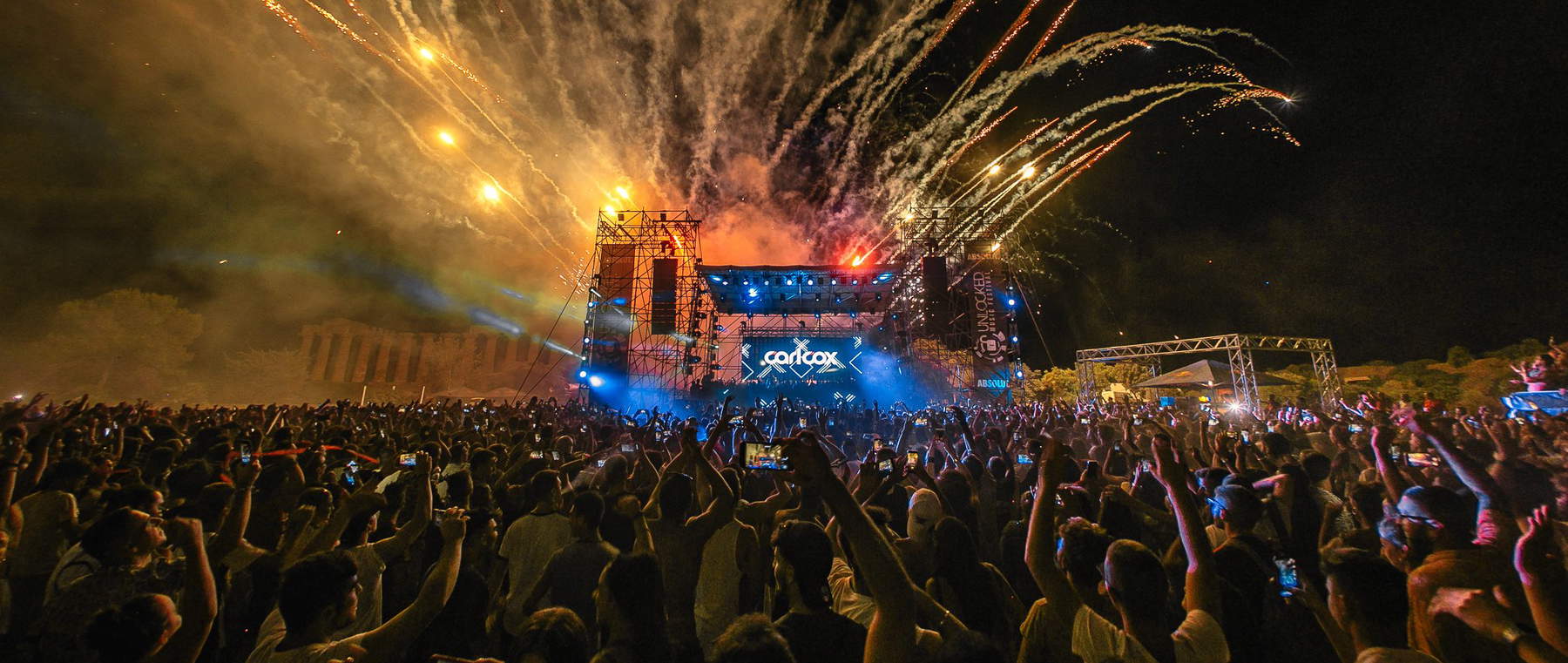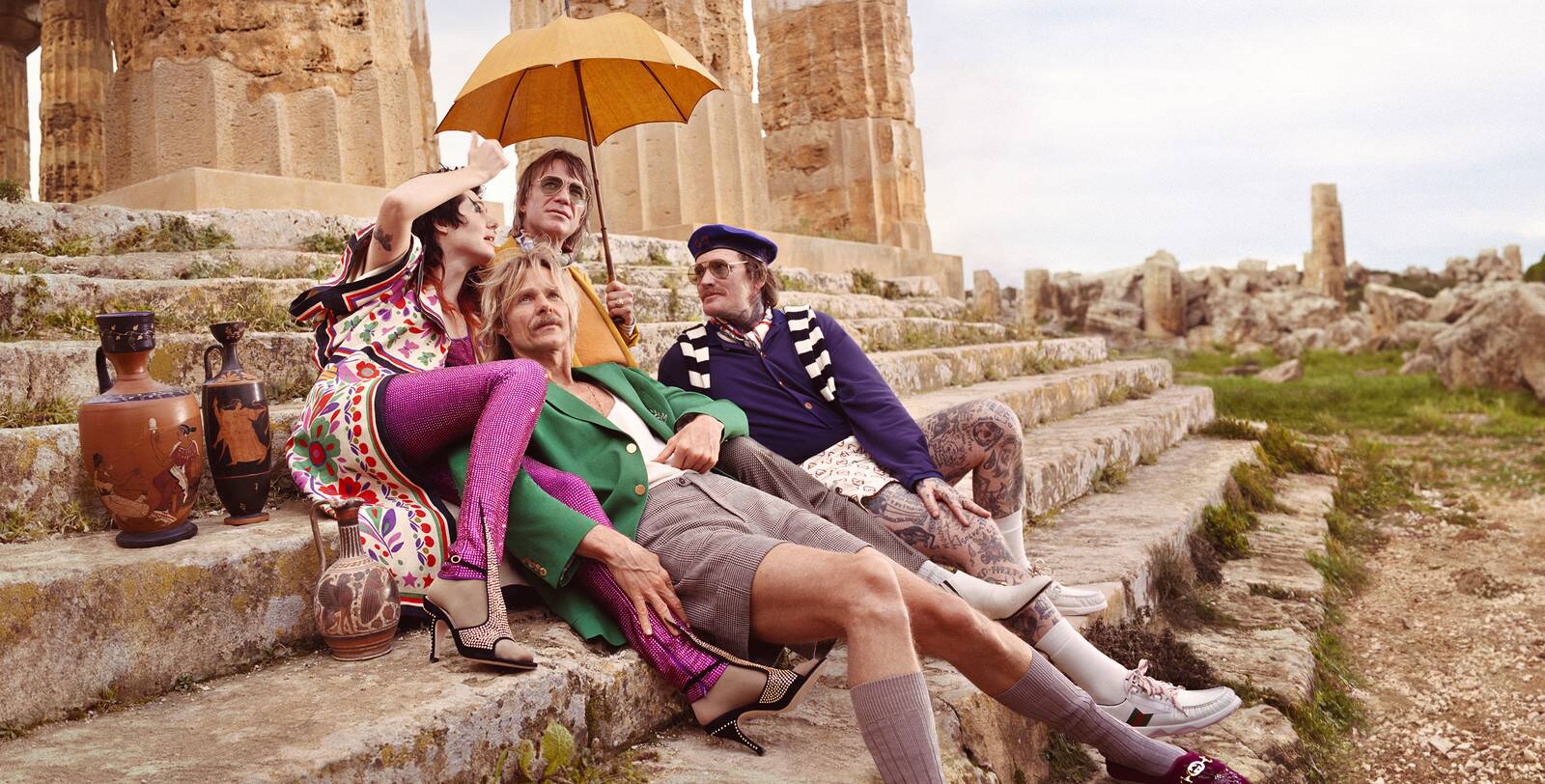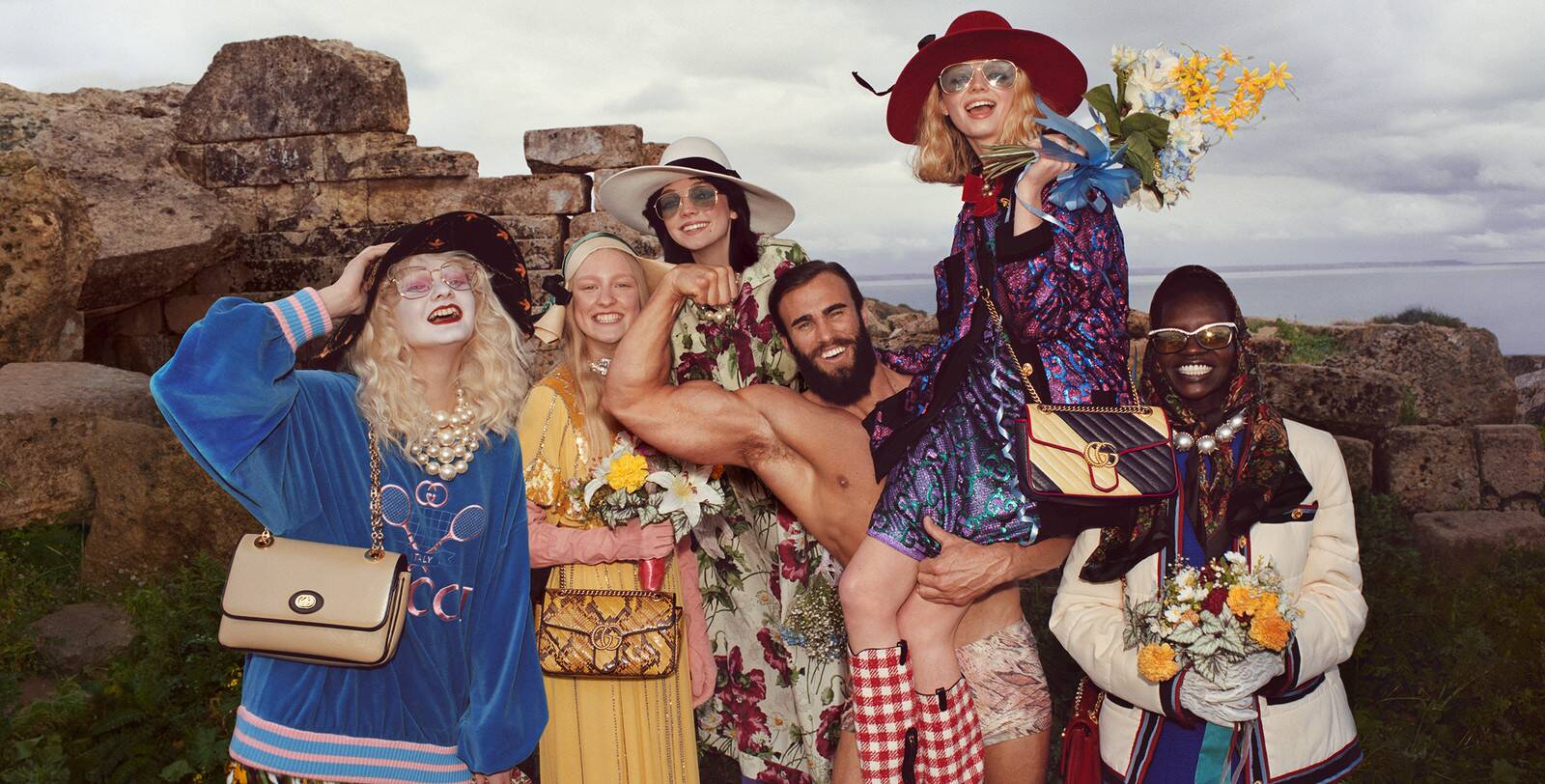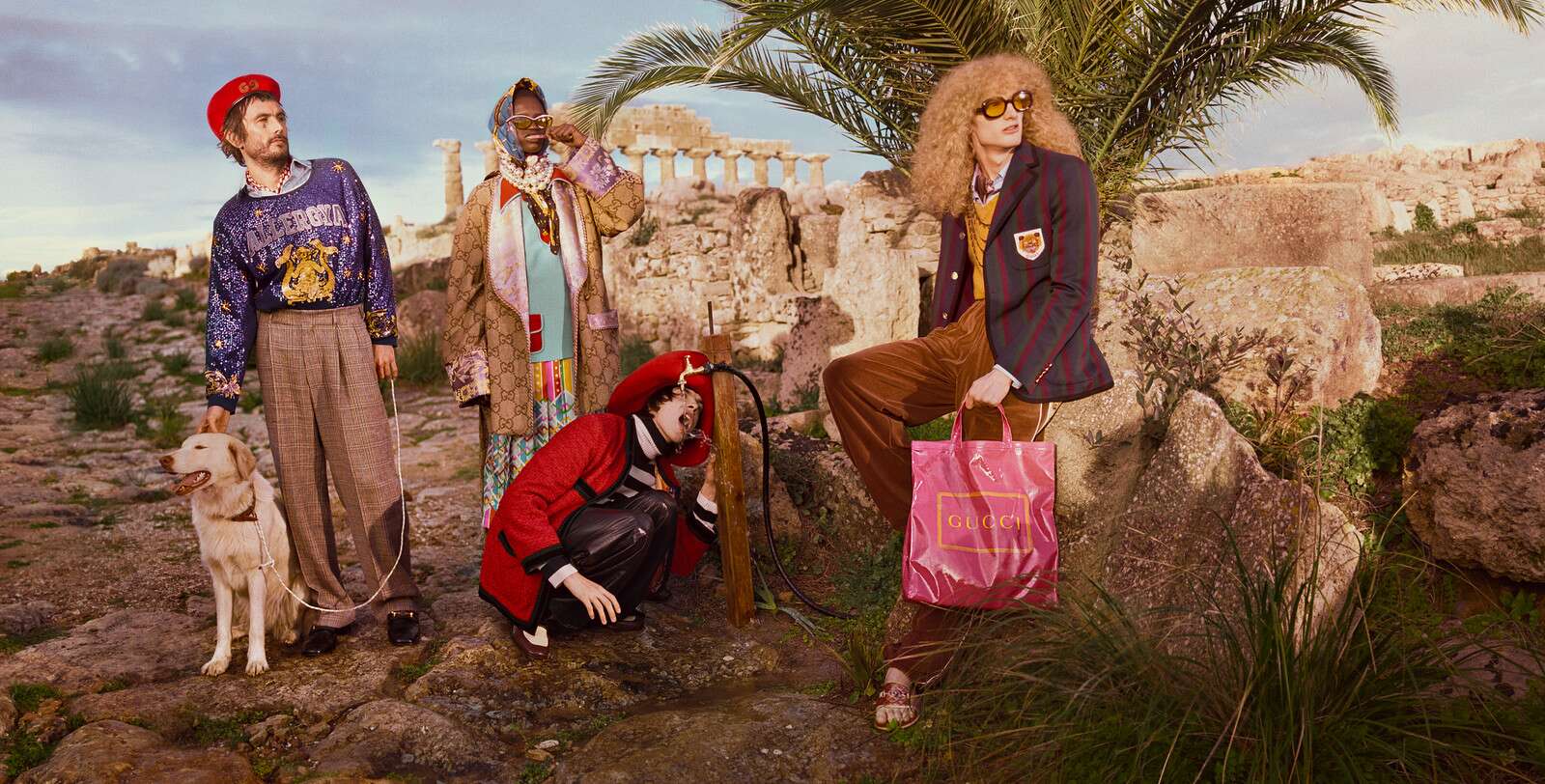In one of Italy’s most important archaeological parks, that of Syracuse, but not in the better-known Greek theater of Neapolis, but in the Akrai theater, 40 kilometers away in Palazzolo Acreide, an event was staged on Sept. 12 that respects the historical-artistic character of the monument and is compatible with its cultural destination. This is not the rule. And not only in Sicily. A stone’s throw from the Bouleuterion, a building in which the Senate met to administer justice, actors David Coco, Simone Luglio and Liborio Natali performed Claudio Fava’s dramaturgical text, based on the Concluding Report of the Inquiry into the “Montante System” approved on March 19, 2019, by the Parliamentary Commission of Inquiry and Supervision on the Phenomenon of the Mafia and Corruption in Sicily.
The topic is an evergreen. “Do we understand valorization as a requirement to accommodate events of dubious taste, from fashion shows to exclusive dinners in museums or cultural venues in general? Well, this is not cultural valorization, as provided for in the Cultural Heritage Code and Article 9 of the Constitution,” meaning “public enjoyment for cultural purposes,” but “boorish valorization in terms of mere economic utilitarianism.” In aninterview in Il Giornale dell’Arte, Gino Famiglietti, director general of Archaeology, Fine Arts and Landscape, who retired last August 1 and was also deputy head of the Legislative Office in the Mibact, does not mince words.
Heritage for rent: it’s not always a crime. At Milan’s Castello Sforzesco, for example, a candlelight dinner can be held in the splendid Cortile della Rocchetta; other events can be hosted in the Portico dell’Elefante, the Panoramic Rooms or the Torre Falconiera. No tables and flatware, however, among the works of art in the museum rooms inside the castle. That it is possible for heritage sites to host events that are respectful of their monumental and landscape values is also demonstrated by the productions staged in a single circuit, in the summer season, in the stone theaters of Sicily. The project, thanks to an agreement between the Assessorato dei Beni Culturali and the Assessorato al Turismo (in Sicily, unlike Mibact, they are separate), is called Anfiteatro di Sicilia, a billboard of events, from opera to prose, from ancient drama to classical music, from opera to operetta, between Taormina, Catania, Tindari, Segesta and Syracuse.
But more often than not, these are events that struggle to reconcile with the dictate of Article 106 of the Code (Legislative Decree 42/2004) governing the individual use of cultural property. Even if it has been guaranteed, according to the law, “the preservation of the property,” can a wedding, such as the Indian wedding from the Thousand and One Nights in the Ammannati Courtyard at the Pitti Palace a few years ago be considered compatible “with the historical-artistic character of the property”? Is a wedding a cultural event? In December 2014, however, precisely on the conservation front there was no shortage of problems: a gala dinner caused damage to the pietra serena pavement of the same Cortile. Another wedding, it was January 2018, and this time with potential damage to the unwary decorator who climbed onto one of the monumental lions of the Royal Palace of Caserta.
Public or elitist enjoyment?
In any case, exclusive events, for the few, while the law calls for “public enjoyment,” and therefore visiting hours should not be changed, much less go as far as outright banning, even if circumscribed in time (a few hours or an evening). In Sicily, the 2013 buffet at the temple of Segesta led the way, then it was the turn, in 2016, of the Spritz at the same temple, with logos and other advertising signs shot from multicolored beams of light on the pediment. This summer it was the turn of the “Google Camp” in Selinunte, or the elitist inhibition of public enjoyment of a heritage that belongs to everyone. Even worse when the same event that brings together the international jet set was hosted at the Valley of the Temples, turning the Unesco heritage site into a World Heritage Site... clockwork. Which ceases, that is, to be so for such an occasion, from such an hour to such another and depending on who the applicant is and how much they are willing to spend. Should notthe concession to the private individual of the Temple of Concord, in other words, always be subordinated to the guarantee that the symbolic value of the monument as the heritage of all mankind, without distinction of census, be preserved? An argument that can be extended, of course, to all World Heritage List sites, so it matters little whether it is a banquet or a high fashion show. In short, it is not enough that the protection of cultural property is ensured. The law speaks clearly.
Between the “purists” who see it as an unacceptable form of privatization of cultural property in deference to a mercantilistic view of heritage and the director-managers for whom limited financial resources make it necessary to access a varied range of possibilities of fundraising, there always remains the possibility of finding a middle ground between heritage enhancement and its commercialization, in order to assess, within a shared grid of rules and procedures, on a case-by-case basis, the validity of the concession in question.
 |
| The Greek theater of Akrai and the Bouleuterion |
Concessions of use: Selinunte model vs. Akrai model
And so we return to the opening topic. Sicily itself offers two juxtaposable examples, by theme (legality) and location (archaeological sites), that make it clearer how quite different the approach to the use of monuments can be. They also underlie two visions on cultural policy that can hardly be traced back to the same governing direction. Two years after taking office, the government led by the leader of a movement called #diventeràbellissima(Nello Musumeci, by the way, is still interim councillor six months after the tragic death of Sebastiano Tusa) what does it intend to do when it grows up? Is the model of valorization through the concession of use of cultural assets that of Selinunte or that of Akrai? The traditional instability of the sector, which has seen a whirlwind of aldermen for several legislatures (six under the Crocetta government, three in this one, including Musumeci) is certainly not conducive to a coherent political direction.
Of valorization to be understood as public enjoyment for cultural purposes, not only the 2004 Code and the laws of the early 20th century speak, but also the autonomous region’s regulations. The distant l.r. 80/1977 identifies in the “social use of cultural and environmental goods in the territory of the Sicilian Region,” one of its purposes, along with protection and valorization, thereby emphasizing that the cultural, and therefore social, value of the good is superordinate to any other value, including the economic one. Which is not to demonize the cultural policy-economic policy pair, which is not only possible instead, but desirable, since “every cultural policy involves an economic policy” (Carlo Tosco, 2014).
On the one hand, then, the dramaturgy on the acts of the anti-Mafia commission staged at the Greek theater thanks to the collaboration between the Archaeological Park of Syracuse led by Calogero Rizzuto and the Municipality of Palazzolo Acreide led by Mayor Salvatore Gallo, with free and free admission (like the other culturally “sustainable” last June 11 with a performance by tenor Dave Monaco as a tribute to his land); on the other a colossal stage from which on August 18 DJ Carlo Cox transformed the acropolis of Selinunte into a mega-disco with the temple of Hera relegated to a backdrop-postcard, resulting in a debasing shrinkage. If this is the effect on the monumental values one would also have to wonder whether the columnar boulders have remained “insensitive” to the blaring emissions. That, in fact, music pollutes (including in terms of CO) is documented by an Edison project(Edison Change the Music) with the aim of reducing the environmental impact of musical events. While anthropic is called the one produced by the ten thousand people who poured in at the foot of the stage, in comparison with which the three thousand per night in 2017 for the kolossal show on Nero at the Palatine in Rome are trifles. Of “the need to evaluate the organizational impact of events like this” for “a site of rare beauty for location, silence, landscape,” Rita Paris, president of the Bianchi Bandinelli Foundation, former director of the Appia Antica Archaeological Park, tells us. And let us be clear, the project behind the performance is one of those important and serious ones: Music & Legality, conceived eight years ago by witness of justice Valeria Grasso, this year sponsored by the Ministry of Health. Culture of legality in continuity with the cultural destination of the site, then. Nicola Morra, chairman of the Parliamentary Anti-Mafia Commission, recalled the symbolic value of the initiative held near Castelvetrano, the fiefdom of fugitive boss Matteo Messina Denaro. It is extremely important, but is it also enough? Once again, it is the very special condition, material and in terms of intangible values, of the site, not a stadium or a square or a velodrome like the one that hosted the previous edition in Palermo, that requires that all the profiles-protection of the property, respect for its historical-artistic character, public enjoyment and cultural destination-are met, and not once one and another, indicated by Article 106 of the Code.
And if counting the money in the till should never be the meter, can we in any case consider congruous, in the face of receipts that hover around 320 thousand euros (ticket cost 32 euros for ten thousand people), the 30 thousand euros paid to the park, plus 5% on ticketing, eyeballs another 16 thousand euros? Agreements downward as it was for the performance of another DJ, Martin Garrix: 40 thousand against 400 thousand. Although, in fact, Bernardo Agrò, director of the Archaeological Park of Selinunte, Cave di Cusa and Pantelleria, said that the event “allowed the children to enjoy a place they had never before enjoyed like this,” in reality, not only has it already happened (it was on July 29, 2017) that the temples of Selinunte were transformed into a mega DJ set, but it was also then managed to decisively overcome the limit to the sustainability of the enjoyment of cultural heritage granted in use to private individuals: difficult, in fact, to be able to find Garrix’s performance compatible with the historical-artistic character of the site. Pure electronic music, behind no educational or other project.
 |
| A moment of Music & Legality |
Promotion or mystification? Gucci in Selinunte
And also in Selinunte, this time not for a fashion show, but for an advertisement, the doors were opened to the fashion house Gucci to which in February 2017 Greece, choked with debt, said no: it proposed 2 million in restoration work in exchange for a quarter-hour fashion show at the Acropolis. The denial because the nation recognizes the Parthenon as a symbolic monument of democracy. Not a physical space and material good what the Greeks denied, but what survives the wear and tear of stones: the semiophoric power of art. And a highly elitist event like a fashion show is hardly combined with the concept of democracy.
Last spring, Gucci’s Pre-Fall 2019 campaign staged “the symposium of Selinunte” by portraying, as per the spot’s description, “a group of eclectic bohemians among the ruins of the temples of the archaeological park.” A symposium in which hardcore punks, rollerbladers, bodybuilders and surfers roam, “where,” we quote again, “friends and lovers meet to discuss philosophy and politics, read poetry, make music, play sports and dance.” But is this really a modern-day reinterpretation of what took place at the site? To check whether a correct cultural message has been conveyed to the vast audience of non-specialists, we preferred to hear not from the director of the archaeological park, Agrò, who is an architect, but precisely from an archaeologist, Massimo Cultraro, first researcher at the Institute for Archaeological and Monumental Heritage (IBAM), CNR in Catania. “In the Greek world,” he explains, "the symposium took place inside private residences. Then there are public places, such as hestiatoria, within sanctuaries, where symposia practices took place. In the Greek colonies of the West these places of consummation of common spaces coincided with a stoà, inside which there were special rooms equipped with triclinî. In Sicily we know of many instances, but in Selinunte the building for symposiac banquets, the only one for which we can speak of a ’symposium place,’ is located within a private residence on the eastern side of the agora, a dwelling dated to the sixth century BCE. Recent studies have made it possible to assign this residence a public role, being located near a sacred area. On the Acropolis, the L-shaped stoa on the eastern edge of the terrace east of Temple C has been indicated as a communal banqueting area, but there is no probative archaeological evidence. For this reason recently some scholars have thought that the small Oikos A, on the southern edge of the same terrace, was the actual banquet hall."
 |
| Gucci’s campaign in Selinunte |
 |
| Gucci’s campaign in Selinunte |
 |
| Gucci’s campaign in Selinunte |
In summary, “at Selinunte we have no certain elements of where religious banquets took place, but in analogy with other cases from Sicily and Magna Graecia, it is likely that they took place within the sacred area dominated by the grandiose temples C and D.”
So, ritual banquets and places devoted to them probably existed in Selinunte as well. What we are interested, then, in understanding for the purposes of our discussion is whether the practices that were held in them can be found represented, or rather evoked with poetic license, in the Gucci advertisement. Because sports, dances, conversations that we see there, in the collective imagination recall instead practices in use at domestic symposia. The archaeologist confirms, “they are different activities and diversified over time. Symposium is one thing (private sphere, singing, dancing and acting), Dionysian festivals, like other religious ceremonies, other thing. The former is private, the others are public.” He concludes, “Therefore, if Gucci intends to lump everything together, it is a mystification.”
In short, it is not a question of taste or provocation, but a question of respecting the values of the host monumentality and verifying, from a scientific point of view, the correct links with ancient Greece. Gucci, too, even louder and more provocative: blood-stained clothes for a “heinous” ritual banquet in the Sanctuary area, rather than the unlikely domestic banquet. “That symposium is not crazy,” Rita Paris comments again. “Kudos to Gucci, less so to us who know how to make these places speak through these initiatives rather than anything else.”
In conclusion, if at the top of the reasons why it is worth renting a space James Bradburne, director of the Pinacoteca di Brera, places that of “strengthening the museum’s mission and creating links with the city,” at the Selinunte Park they tried to promote heritage and create links with the rest of the world by communicating a superficial message, indeed “a mystification.” Which is certainly not within the mission of a public institute. Without wanting to plaster heritage, we believe, however, that the contemporary world has infinite “pagan temples” useful for hosting events such as these, dignified in themselves, and that the sacredness of places such as Selinunte should be preserved not only in its stones, but in that semiophoric power that the modern Greeks have shown they know how to protect, in this worthy heirs of their ancestors.
Can knowing how to make choices, to educate and not pander to visitors’ taste for smart, cursory, when not incorrect fruition, as in the case of Gucci in Selinunte, really be (fra)understood as a brake on the enjoyment of cultural heritage? We believe not, comforted by the good example that comes from another archaeological park, that of Syracuse.
Warning: the translation into English of the original Italian article was created using automatic tools. We undertake to review all articles, but we do not guarantee the total absence of inaccuracies in the translation due to the program. You can find the original by clicking on the ITA button. If you find any mistake,please contact us.